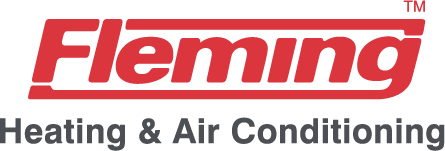
You shouldn’t need to sacrifice comfort or empty your wallet to keep your home at a pleasant setting during muggy weather.
But what is the ideal temperature, exactly? We discuss recommendations from energy professionals so you can find the best setting for your loved ones.
Here’s what we recommend for the most energy-efficient setting for air conditioning in South Beloit and Belvidere.
Recommended Thermostat Settings for Summer
Most people find using the thermostat at 72-73 degrees is ideal. However, if there’s a major difference between your indoor and outdoor temperatures, your electrical bills will be larger.
These are our recommendations based on the U.S. Department of Energy (DOE) and ENERGY STAR®.
While at home: 78 degrees. While that sounds warm, there are ways you can keep your residence refreshing without having the AC running frequently.
Keeping windows and blinds closed during the day keeps cool air where it needs to be—within your home. Some window coverings, like honeycomb shades or plantation shutters, are created to offer added insulation and better energy conservation.
If you have ceiling fans in your residence, the DOE says you can raise thermostat settings about 4 degrees higher without sacrificing comfort. That’s since they cool with a windchill effect. Because they cool people, not areas, switch them off when you move from a room.
If 78 degrees still feels too warm on the surface, try conducting an experiment for approximately a week. Begin by raising your temperature to 78 degrees while you’re at your house. Then, progressively turn it down while using the advice above. You could be astonished at how refreshed you feel at a higher temperature setting.
While away: 88 degrees. There’s no need to keep the air conditioning on all day while your residence is unoccupied. Moving the temp 7–10 degrees warmer can save you anywhere from 5–15% on your cooling costs, according to the DOE.
When you get home, don’t be tempted to set your thermostat colder than 78 to cool your house more quickly. This isn’t useful and often produces a higher air conditioner expense.
A programmable thermostat is a helpful way to keep your temp controlled, but it requires setting programs. If you don’t use programs, you might forget to move the set temperature when you go.
If you’re looking for a convenient remedy, consider getting a smart thermostat. This thermostat works with with your phone, so it realizes when you’re at your residence and when you’re gone. Then it instinctively changes temperature settings for maximum savings. How much exactly? Typically $180 annually on heating and cooling, according to ENERGY STAR.
Another perk of using a smart thermostat? You can use your phone to monitor and regulate temperature settings from nearly anywhere.
While sleeping: Around 70 degrees. While ENERGY STAR recommends 82 degrees, that might be too uncomfortable for many families. Most people sleep better when their sleeping area is chilly, so that’s why the National Sleep Foundation suggests 60–67 degrees. But that may be too chilly, due to your PJ and blanket preference.
We advise using a similar test over a week, putting your temperature higher and steadily decreasing it to pick the ideal temperature for your residence. On mild nights, you may discover keeping windows open at night and using a ceiling fan is a preferable option than running the air conditioning.
More Approaches to Use Less Energy During Hot Weather
There are added approaches you can spend less money on utility bills throughout hot weather.
- Buy an energy-efficient cooling system. Central air conditioners only last about 12–15 years and lose efficiency as they become older. An updated air conditioner can keep your house more comfortable while keeping energy expenses low.
- Book regular air conditioner tune-ups. Annual air conditioner maintenance keeps your equipment operating smoothly and may help it work more efficiently. It might also help extend its life span, since it allows technicians to pinpoint small issues before they lead to a major meltdown.
- Switch air filters often. Use manufacturer instructions for switching your air filter. A dusty filter can lead to your system short cycling, or turn on and off too often, and drive up your utility.
- Check attic insulation levels. Just about 90% of residences in the United States don’t have proper insulation, according to the Insulation Institute. Many southern climates should have 13–14” of attic insulation, while northern climates need 16–18”.
- Have your ductwork inspected. Ductwork that has loosened over time can leak cool air into your attic, walls or crawl space. This can result in major comfort troubles in your house, such as hot and cold spots.
- Seal openings, doors and windows. Keep warm air where it should be by sealing openings. You can also caulk or weather strip doors to keep more cold air within your home.
Save More Energy During Warm Weather with Fleming Heating & Air Conditioning Inc
If you want to conserve more energy during hot weather, our Fleming Heating & Air Conditioning Inc specialists can provide assistance. Give us a call at 877-389-2465 or contact us online for more details about our energy-saving cooling options.


